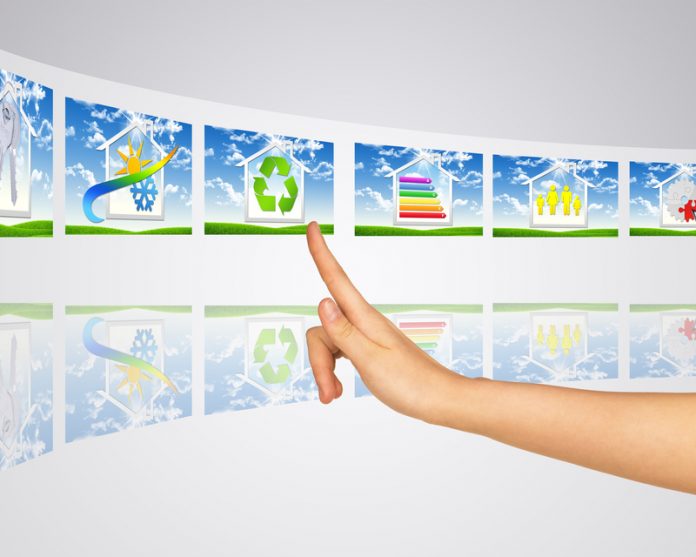Oliver Iltisberger, Division President, ABB Smart Buildings, explains why building ‘smart’ is key to reducing energy consumption and carbon
According to the International Energy Agency (IEA), the buildings and construction sectors combined are responsible for over 30% of global energy consumption, and nearly 40% of carbon emissions. (1)
With many governments around the world now setting stringent targets for reducing carbon emissions, building ‘green’ is no longer a luxury option. Building developers are expected to include active emission mitigation technology in their developments from the outset to meet the sustainability demands of regulators, clients and occupants.
Therefore, shifting to more energy-efficient buildings is now regarded as central to implementing successful carbon reduction strategies. The IEA also found that smart controls and connected devices could save 230 EJ in cumulative energy savings by 2040, lowering buildings energy consumption by as much as 10% globally, while improving comfort for building occupants. (2)
There are a variety of ways in which smart buildings help achieve this.
Using data to address inefficiencies
As a building adapts to the demands of its users and the goals of its managers, it should become more intuitive so that it saves energy, cuts emissions and reduces costs.
While many commercial buildings will already have a certain element of smart technology installed – from centrally controlled lighting and heating ventilation and air conditioning systems (HVAC) to remote management of security and energy management systems – not all managers will be using the data these devices produce to take steps to reduce the carbon footprint of their properties.
Embracing smart technology gives buildings managers access to instant data on how their assets, such as heating, lighting and access control, are performing. This data can be used to gain a thorough understanding of how the different systems in the building interact, and the external factors that may impact them.
By using this insight, operators can implement effective building controls to manage efficiencies, identify maintenance issues, ensure the wellbeing of occupants, and inform future investment priorities. So, for example, if a building is now being used in a different way due to changed occupancy, the data will show the manager what needs to be done to ensure it is operating as efficiently as possible.
Using a digital platform supports smart buildings with integrated solutions that achieve energy efficiency and reduce electricity consumption and costs in industrial, commercial and residential environments.
When fully implemented, these solutions typically deliver a 30% reduction in energy costs for heating, lighting and appliances. For example, energy-efficient controls can radically enhance the performance of HVAC systems, reducing energy consumption by up to 50%.
When comparing energy savings with the falling cost of installing a basic smart management system, smart buildings immediately prove their worth. According to a report from HSBC, if a smart system delivered an energy cost saving of 25%, with an installation cost of $37,500 for a 50,000 ft² building, the annual savings could be $23,000 annually, with a payback period of less than two years.
Integrated technologies create an ‘energy positive’ building
As well as reducing emissions, smart technology can also be used to integrate a range of technologies to make a building ‘energy positive’, allowing it to generate enough energy to power itself, and create excess power that can then be stored or sold back to the grid.
For example, the CO2-neutral factory in Lüdenscheid, Germany integrates technologies including solar PV, EV charging points, smart energy management and a highly efficient cogeneration plant into one intelligent system, which is digitally networked and controllable. On sunny days, solar technology generates up to 100% of the factory’s power requirements and, when used in conjunction with the site’s cogeneration plant, Lüdenscheid can generate 14% more energy than needed, as well as saving up to 630 tonnes of CO2 a year. This surplus can be sold back into the public grid, meaning that the site is energy positive.
Moving towards a sustainable future
The next 10 years will be crucial if the ambitious global carbon reduction targets are to be hit, and the decarbonisation of buildings is one of the major challenges to overcome. The use of smart technology will play a key role in this – as buildings become more intelligent, they can learn how occupants use the space and services and then proactively adjust lighting, HVAC and other systems to improve use, cut emissions and reduce energy consumption.
Over time, buildings of all kinds will become energy positive and carbon negative and will help combat climate change. Making the most of smart technology will ensure spaces are used in the most optimum way for a safer, smarter and more sustainable world.
References
(1) https://www.iea.org/topics/buildings
(2) Digitalisation and Energy Technology report — November 2017, International Energy Agency.











